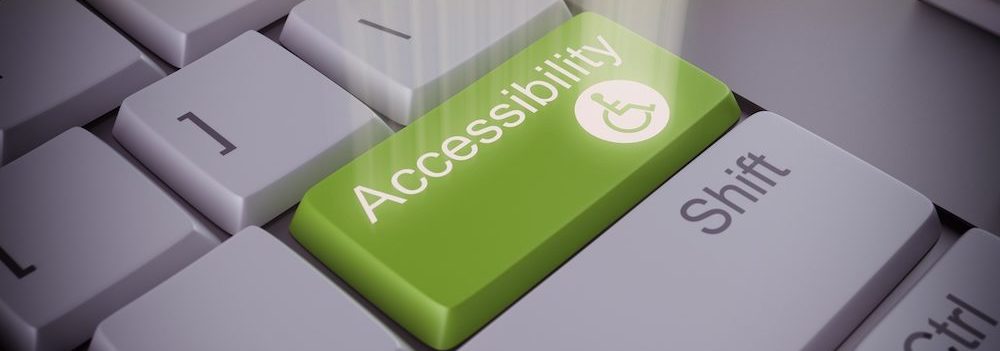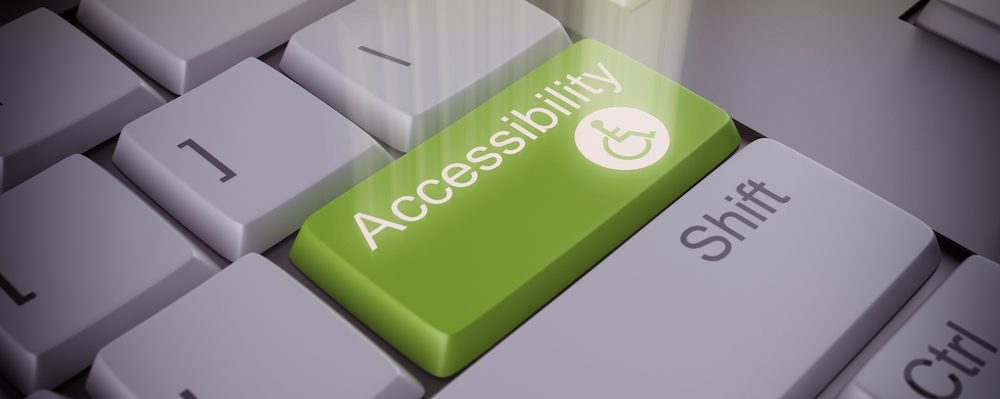
College Students and Access to Accessible Materials
Printed textbooks, inaccessible digital files, uncaptioned audio and video content all create barriers.
One of the roles of the disability resource office is to ensure that students have access to accessible academic materials. There are different models for approaching this responsibility. Having an understanding of digital access and the processes for creating accessible digital materials critical for the disability resource professional.
The Right to Access
Clearly, the right to access to course content is fundamental to the work of the disability resource office. In terms of the Americans with Disabilities Act, this would fall under the requirement to ensure effective communication. This requires entities to ensure that communication—whether verbal or written—is as effective for people with disabilities as it is for those without disabilities. When it comes to course materials, the most common solution is two-fold:
- Provide accessible digital alternatives to print materials
- Ensure already digital materials are accessible
The role of the disability resource professional in this may include some or all of the following:
- Creating accessible materials
- Repairing existing materials
- Providing training and support to faculty and staff in the creation of materials
- Outsourcing with an entity to create or convert accessible materials
- Acquiring accessible materials from publishers or other vendors
- Ensuring there is another entity on campus to do the above
What is Digital Access?
Digital accessibility involves the creation of websites, mobile applications and electronic documents that can be easily navigated and understood by a wide range of users.
Creating Accessible Documents
MS Word Documents
Good document design makes documents the usable by the largest number of users.
Typical problems with Word documents include:
- No alt text for images
- Lack of heading structure
- Poor contrast
- Links that do not provide meaningful text
Tutorial: Creating Accessible MS Word Documents
PDFs
Ideally, an accessible PDF document begins with the creation of an accessible MS Word document that is saved in the proper way. Sometimes though, the source document is not available, and an inaccessible PDF has to be fixed or “remediated”.
Things that make a PDF inaccessible include:
- Inaccessible source document
- A scanned document that is purely an image
- An old PDF created without accessibility support
- Saving a PDF incorrectly so that it is ‘untagged’
- Reading order incorrect
Tutorial: University of Washington: Creating Accessible Documents
(Includes links to both creating a PDF from an accessible Word document and fixing inaccessible PDF documents.)
Creating Accessible PowerPoint Presentations
Good design of PowerPoint slides takes into consideration the multiple ways people will be using the slides. Often, the content will need to be accessible to:
- those viewing the presentation live
- those viewing printed versions of the slides
- those accessing the content electronically
Sometimes just providing the opportunity to see the slides more closely will provide access, but if the student will need to access the slides using a screen reader, more design issues will need to be considered.
Design issues that make PPT inaccessible include:
- Lack of alt text
- Too much / tiny text
- Inadequate contrast
- Use of text boxes instead of default slide formats
Tutorial: Creating Accessible PowerPoint Presentations
Video Accessibility
Typical problems with online video design:
- Lack of captions (auto captions do not provide equal access)
- Video content that is not described
- Video players that cannot be accessed using the keyboard
- Video players without proper labels for controls and buttons
- Lack of availability of a transcript
Tutorial: DCMP Captioning Key
Tutorial: UW – Creating Accessible Videos
Training Module: DCMP – Access: Post-Production/Offline Captioning Module
Accessible Textbooks
Acquisition
Accessible versions of textbooks can be obtained from a variety of sources, depending on the type of book and the format the student needs.
- Learning Ally
- Bookshare
- National Library Services (BARD)
- Audible.com
- Access Text Network
- Vendors of e-text versions
- Contacting the publisher directly
Remember that digital does not necessarily mean accessible.
Remediation
PDFs acquired from publishers may work for some students without any remediation, but often are not truly accessible for a student using text to speech software or screen readers. In that case they will need to be processed for accessibility. Be sure to check the PDF for accessibility before handing it over to the student.
Conversion
If you are unable to obtain a digital version, scanning and creating an accessible version may be the only option.
If you don’t have the staff to do this, it will need to be outsourced to a company that does this. Check with colleagues on various listservs to identify reptutable companies.
Stay Connected with Us!
Enjoy getting resources on access an inclusion? Follow Partners for Inclusive Communities on Facebook and Twitter for more news and resources!
About Explore Access
exploreaccess.org is a web resource developed through a project of the Southwest ADA Center Regional Affiliate – Arkansas, a program of UA Partners for Inclusive Communities through funding from the Southwest ADA Center (90DP0092).
This email is being sent to you at ((EMAIL)) based on your attendance or interest in a workshop sponsored by the Southwest ADA Center Regional Affiliate – Arkansas. You can unsubscribe at any time, but we hope you’ll stay connected with us and that you will find this monthly newsletter helpful. If you have trouble unsubscribing with this link, request removal from the list by emailing Melanie Thornton at mthornt@uark.edu.
